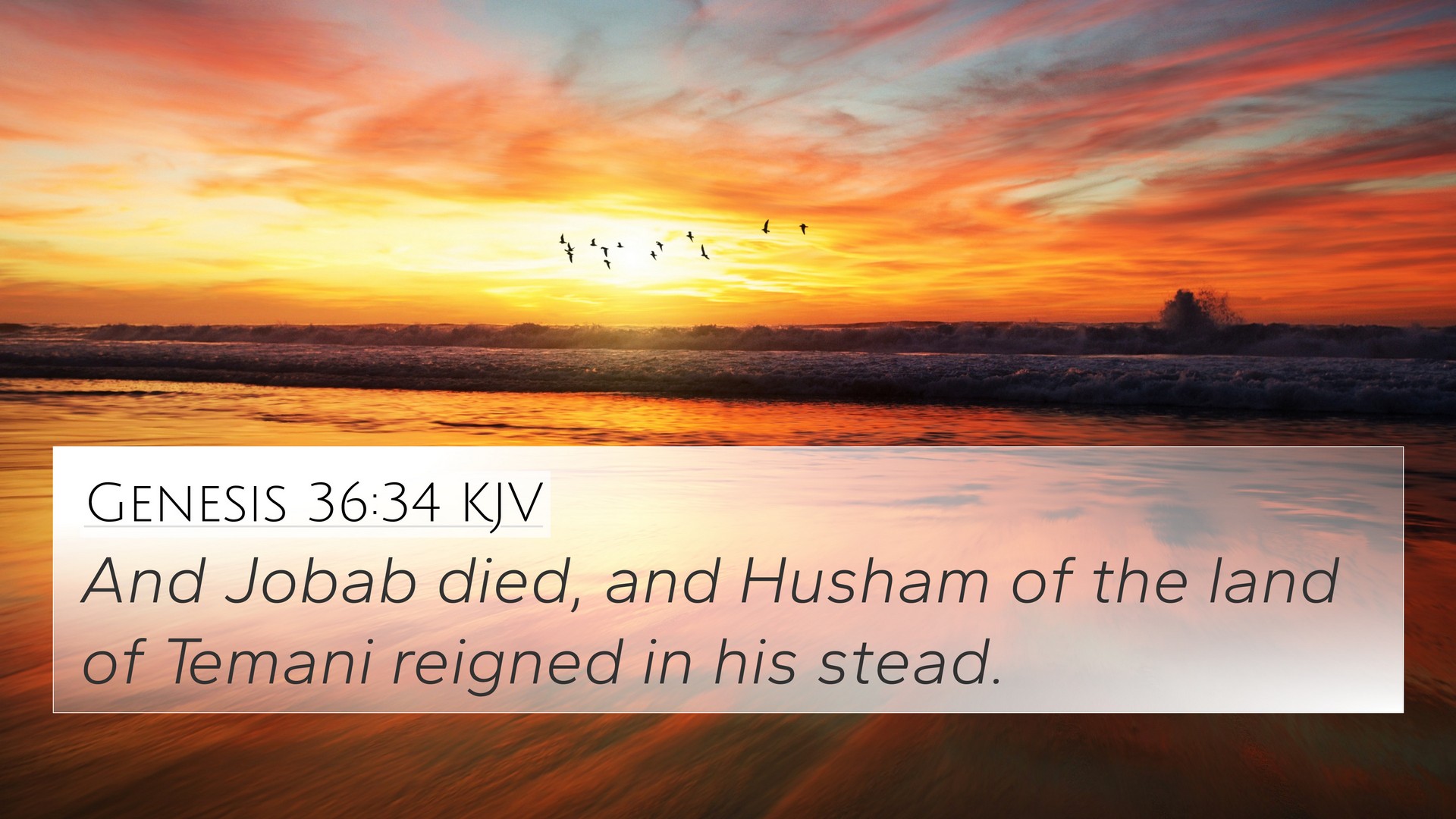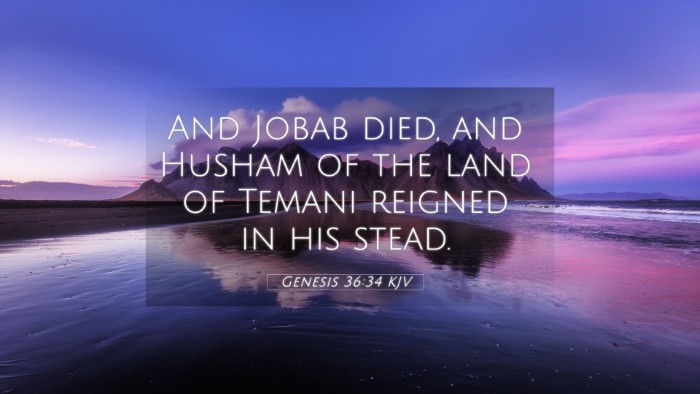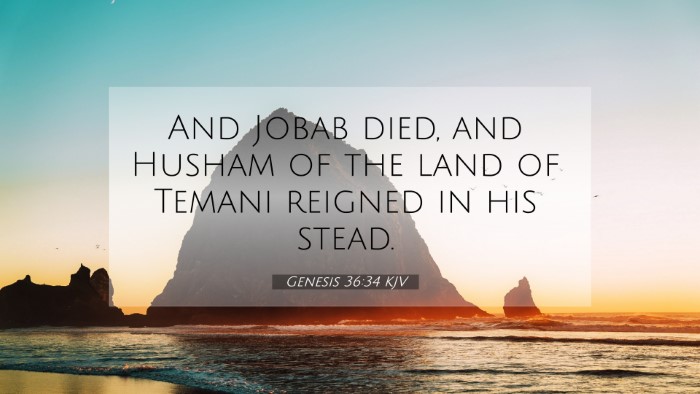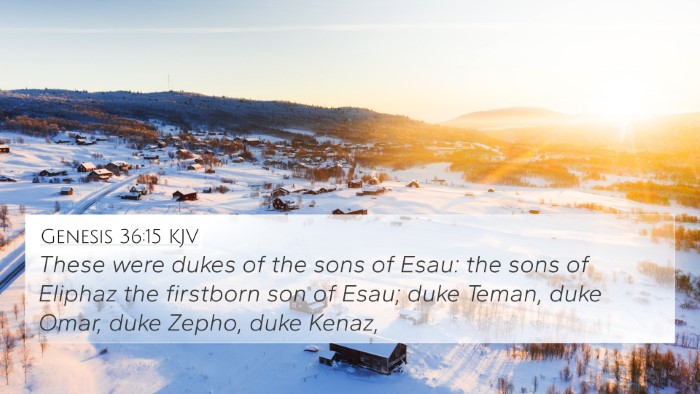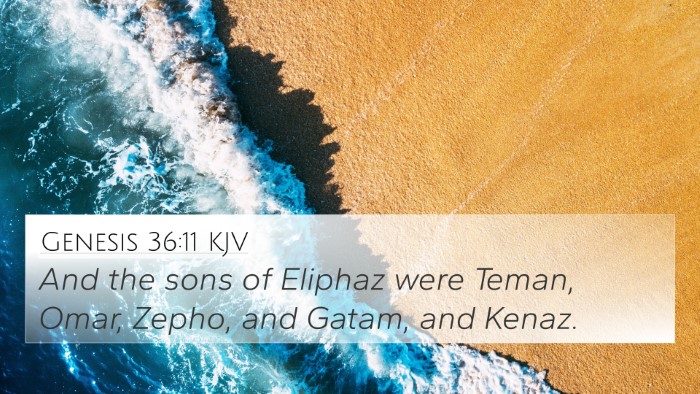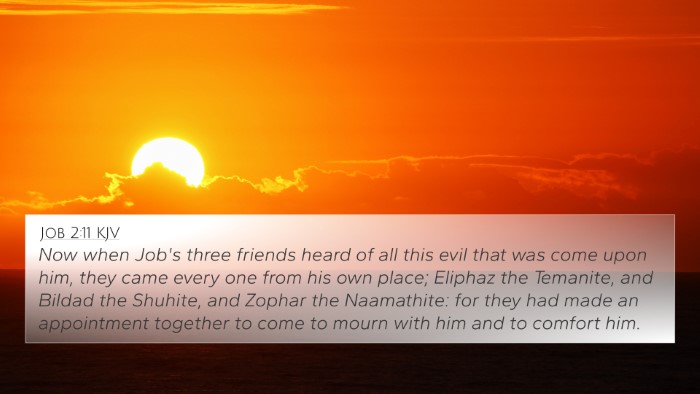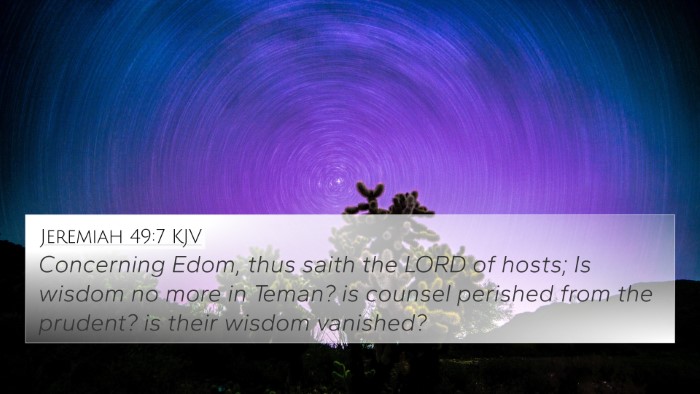Genesis 36:34 - Biblical Commentary and Analysis
Verse: Genesis 36:34 states: "And Jobab died, and Husham of the land of Temani reigned in his stead." This verse is part of the genealogy of Esau, detailing the lineage and the kings that ruled in the land of Edom.
Meaning and Insights
The verse provides a snapshot of the historical context of Edom and its governance. It reflects the succession of leadership among the Edomite kings, emphasizing the transient nature of earthly rulers and the continuity of God's plan through generations.
Commentary Insights
- Matthew Henry: Henry comments that the genealogies serve a purpose in showing God's providence over nations. Each ruler mentioned is a part of God's unfolding plan for Israel and a reminder of the sovereignty of God over human affairs.
- Albert Barnes: Barnes notes that Husham's succession indicates a shift in leadership, but also highlights that these kings ruled over a land marked by conflict and national aspiration, illustrating the struggles faced by the descendants of Esau.
- Adam Clarke: Clarke emphasizes the importance of tracing genealogies in Scripture as a way to understand the flow of biblical history and to connect the narratives of different people and nations throughout the Bible.
Cross-References and Thematic Connections
Genesis 36:34 is interconnected with a number of other biblical passages, each contributing to an understanding of biblical themes such as leadership, legacy, and divine sovereignty. Here are some key cross-references:
- Genesis 36:31: This verse provides insight into the nature of kingship in Edom, outlining how the monarchy began before Israel had a king.
- Deuteronomy 2:12: This verse recounts Israel's encounters with the descendants of Esau, illustrating the ongoing historical connection between these two nations.
- 1 Chronicles 1:43-54: Chronicles gives a genealogical record of the Edomites and their kings, complementing the genealogies found in Genesis.
- Obadiah 1:21: This prophetic text speaks to the future of Edom, shedding light on the consequences of their actions and their leadership choices.
- Matthew 1:2-3: The genealogy of Jesus includes references to Edom, accentuating the importance of these ancestral connections in understanding the lineage of Christ.
- Romans 9:12-13: This New Testament passage discusses God's sovereign choice regarding Jacob and Esau, linking back to their descendants and their fates.
- Galatians 4:22-31: Paul contrasts the two covenants represented by the children of Abraham—drawing also from the legacy of Esau as part of the larger narrative of Israel's history.
Understanding Biblical Genealogies
Genealogies such as the one found in Genesis 36 serve several important purposes in the biblical narrative:
- Historical Context: They provide a timeline and context for events in Scripture, helping to place individuals within the framework of God's redemptive plan.
- Theological Significance: They reveal God's faithfulness across generations and the unfolding of His covenant promises.
- Cultural Heritage: They shed light on the cultural and familial connections between different groups, illustrating the richness of biblical history.
Tools for Bible Cross-Referencing
To delve deeper into the connections between Biblical texts, one can utilize various tools and resources:
- Bible Concordance: A valuable tool for finding words and themes across Scripture.
- Bible Cross-Reference Guide: These guides assist in locating related verses quickly and effectively.
- Cross-Reference Bible Study: Methods for engaging with Scripture that emphasize thematic links and patterns.
- Bible Reference Resources: Comprehensive collections of commentaries and cross-references that enrich understanding.
Conclusion
Genesis 36:34 serves not just as a historical fact but as part of an intricate weave of biblical narratives and connections. Understanding this verse in relation to others illuminates God's overarching sovereignty and the intricate relationships that characterize God’s chosen people with those around them.
Keywords: Bible verse cross-references, connections between Bible verses, linking Bible scriptures, comparative Bible verse analysis, Bible verses that relate to each other, cross-referencing Biblical texts, thematic Bible verse connections, Bible verse parallels, scriptural cross-referencing, inter-Biblical dialogue.
